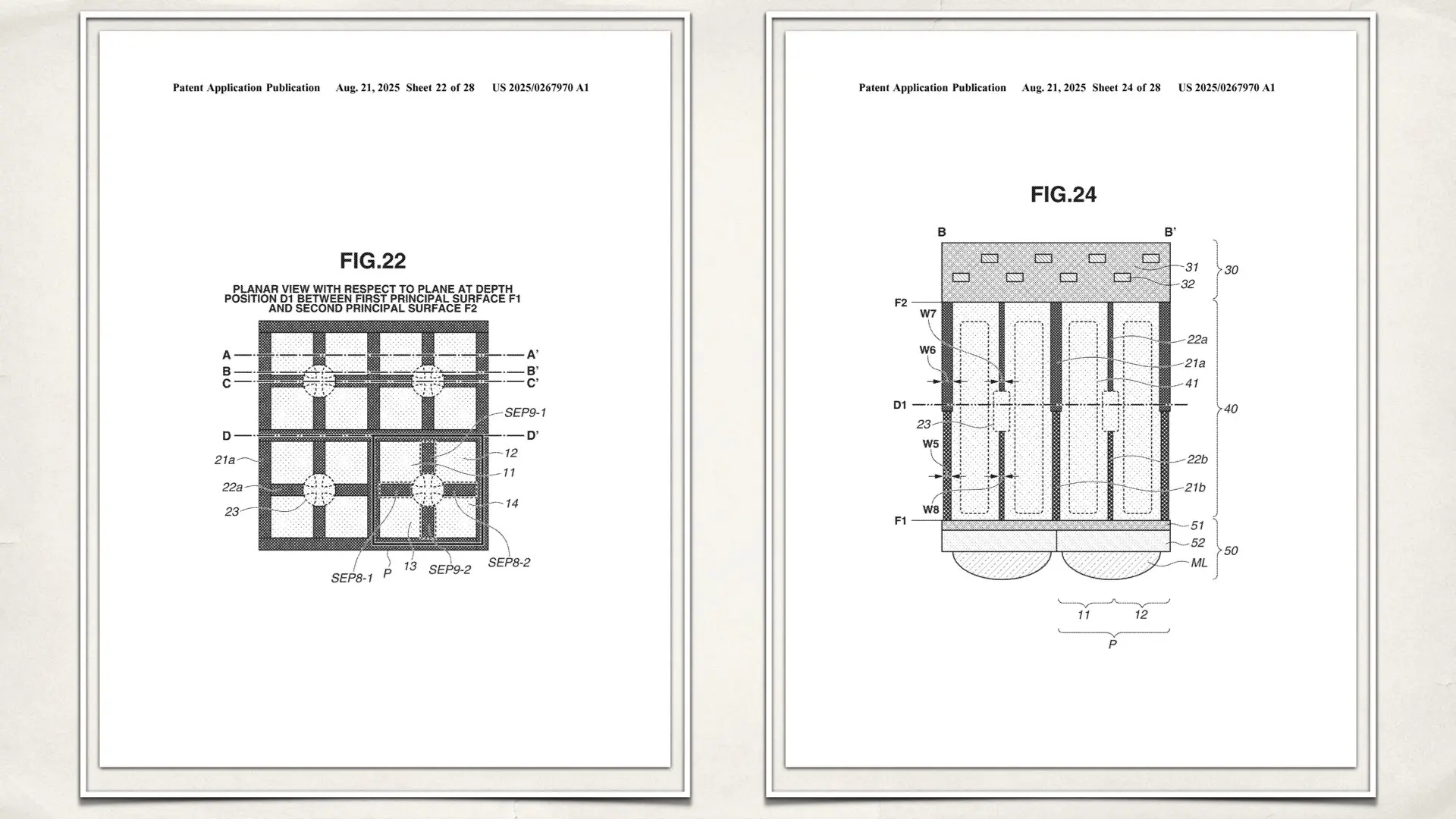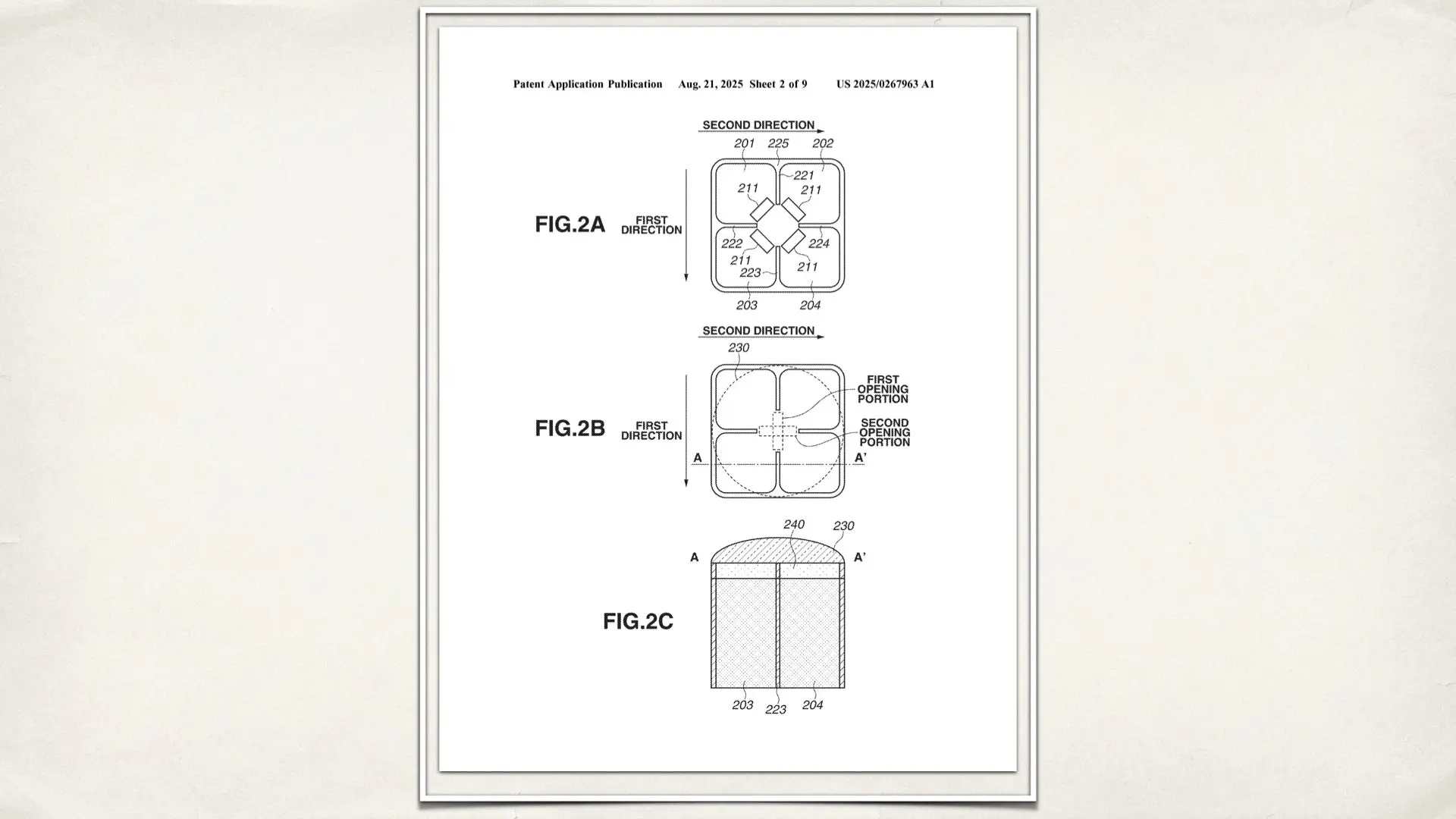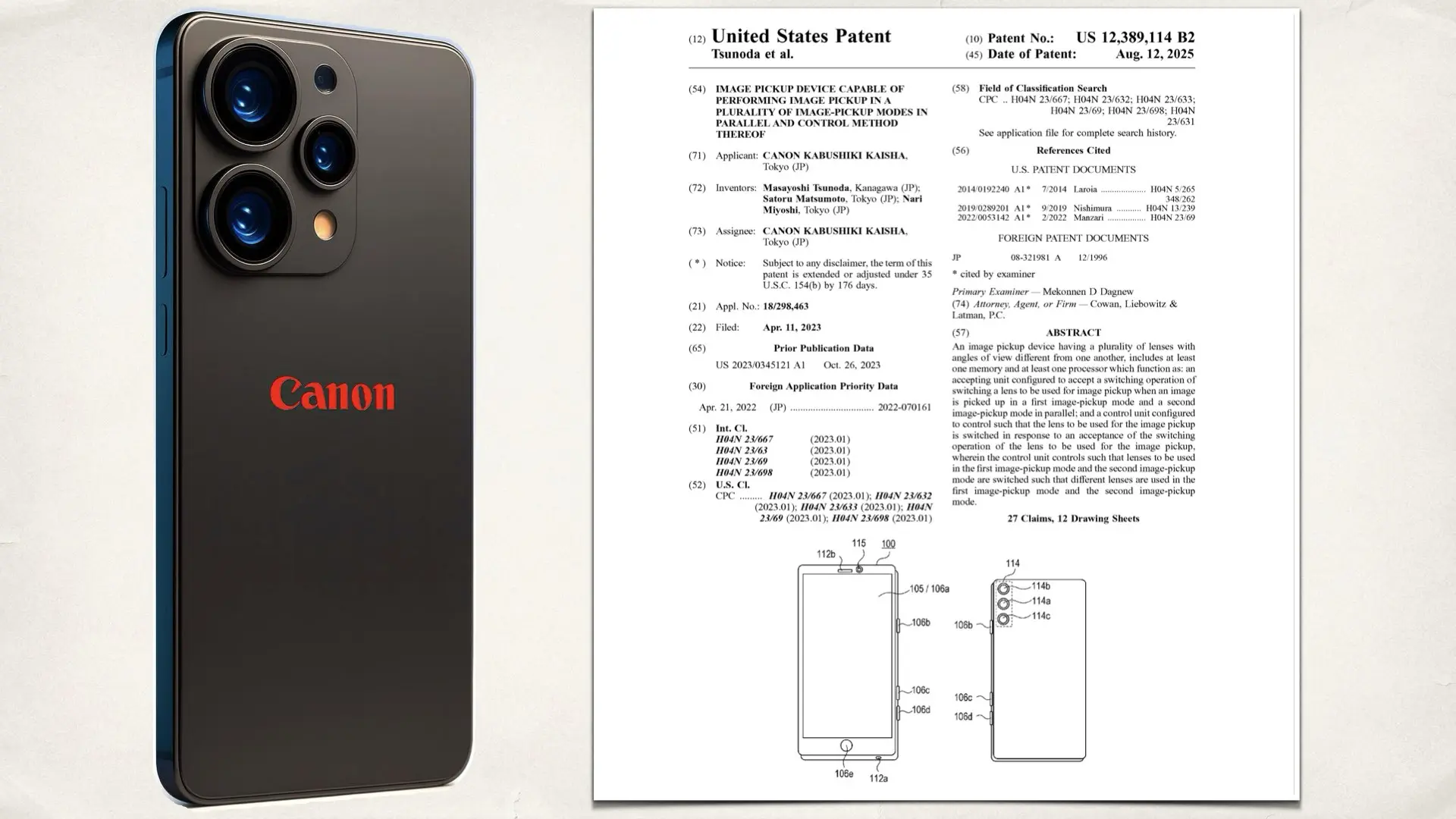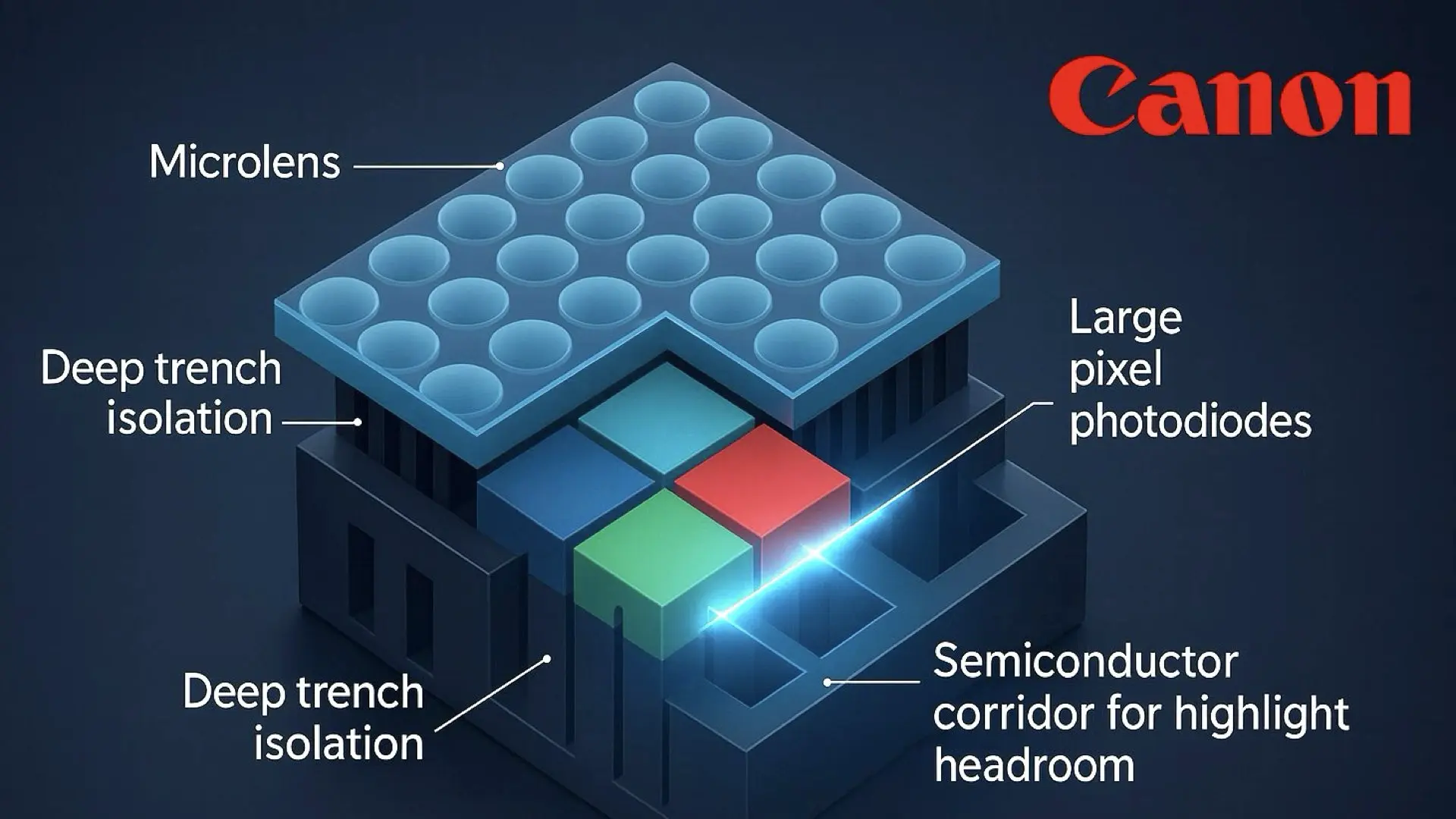Big sensors show everything, including their flaws. Canon just filed two clever pixel designs that aim to fix the usual problem areas in large format cinema imaging. The ideas are simple to grasp, and the potential impact is real. Canon has been on a sensor streak lately. If you missed our recent reporting, see CANON’S 24K FULL-FRAME MONSTER SENSOR IS READY! and Canon patent reveals smarter wiring design for large image sensors. Today we zoom in on two brand new patent filings that push the pixel itself forward.
Imagine each pixel as four tiny buckets arranged in a square and covered by one microlens. Walls between the buckets keep signals clean. That is your familiar quad pixel layout. Canon’s first filing rearranges those walls and the microlens position as you move from the center of the sensor to the corners. Think of a classroom where the desks in the back rows slide outward so every student sees the board. By shifting the microlens and the internal walls in a gentle pattern across the chip, corner pixels catch light where it actually lands. The result is better sensitivity and truer color at the edges, plus stronger phase detect information near the borders. The second filing adds a smart safety valve for highlights. Picture four cups on a tray with small channels between them. When one cup nears the brim, a little water flows into a neighbor so nothing spills. Canon proposes a shallow silicon region between the internal walls that lets a controlled amount of charge move to an adjacent sub pixel before clipping. That adds highlight headroom and keeps the tonal curve smooth, while the walls still block unwanted crosstalk.


Large format sensors collect rays that hit the corners at steep angles. That is where you see color shifts, vignetting, and weaker autofocus signals, especially with fast cinema glass. The first patent tackles those corner issues by aligning the microlens and the light sensitive areas with the real path of the rays. The second patent raises the effective full well capacity inside each pixel, which helps with bright skies, practicals, and specular hits that often push large format images into a harsh roll off.
Put simply
• Cleaner corners with fast lenses
• More consistent phase detect across the frame
• Smoother highlight handling without heavy processing tricks
Hence, these pixel level improvements map directly to Cinema EOS goals. Focus performance: Quad pixel phase information remains usable closer to the frame edges. That supports tracking in wide shots, gimbal work, and handheld coverage where subjects drift off center. Color and shading: Corner pixels behave more like center pixels. That reduces color casts that sometimes appear with strong off axis light and tight apertures. Grading gets easier and matching across lenses gets more predictable. Highlight roll off: In pixel charge sharing delays hard clipping. The shoulder of the curve becomes kinder, which is what cinematographers want when a bright window or a tube light enters the scene.


Look for language that hints at these ideas in future Canon sensor briefs and white papers.
Signals to watch:
• Mentions of image height optimized microlenses or shifted color filters
• Descriptions of deep trench isolation with intentional openings inside the pixel
• Claims of improved corner uniformity at wide apertures
• Notes about expanded highlight headroom that are not tied to multi frame tricks
• Stacked sensor options for faster readout paired with the same pixel geometry
Pair these with the direction suggested in CANON’S 24K FULL-FRAME MONSTER SENSOR IS READY! and the routing ideas from Canon patent reveals smarter wiring design for large image sensors and you can see a coherent roadmap. Big sensors that read fast, hold highlights with grace, and stay clean at the edges.


A quick note on dynamic range
The second filing clearly aims to extend highlight headroom inside the pixel. It is not a dual gain trick or a multi exposure recipe. It is a physical path for a small amount of charge to move before clipping. Expect the main wins on the bright side, while the shadow floor still depends on read noise and downstream processing.


Canon is rethinking the pixel so large format looks the way filmmakers expect. Cleaner corners, friendlier highlights, and stronger autofocus near the edges all come from small geometric choices inside each pixel. If these designs reach Cinema EOS large format cameras, they will be felt on set and in the grade. However! Patents are plans, not products. The ideas are solid and build on well known pixel physics, but the real test is process control and yield. Making many tiny trenches and tuned openings at scale is not trivial. That said, Canon has the manufacturing depth to try.
